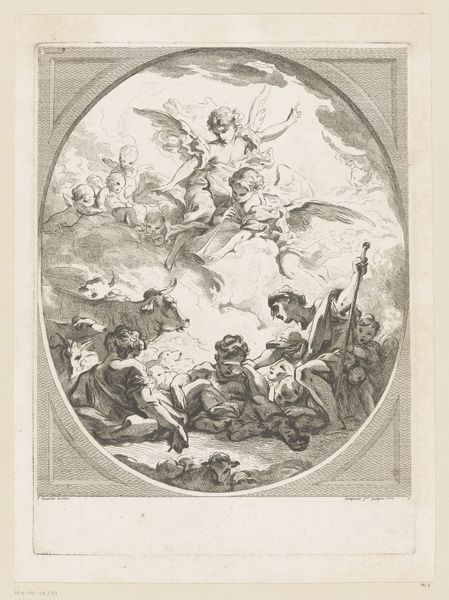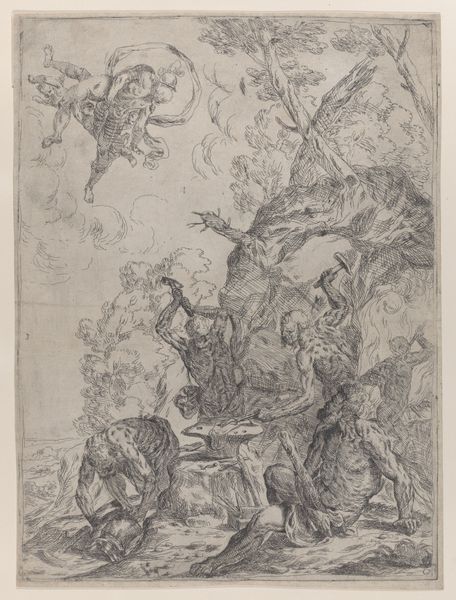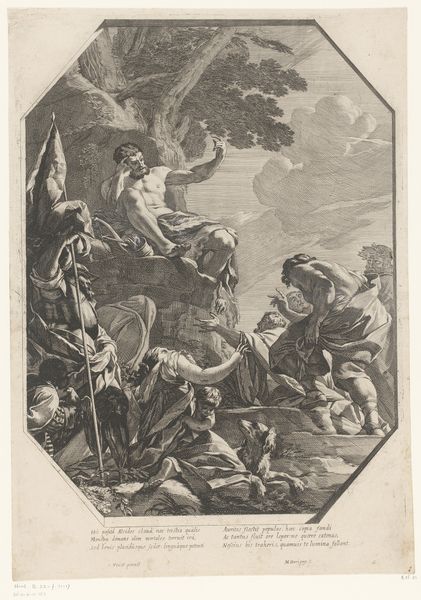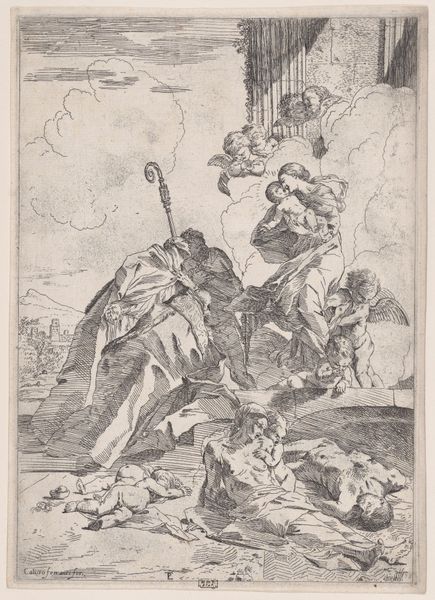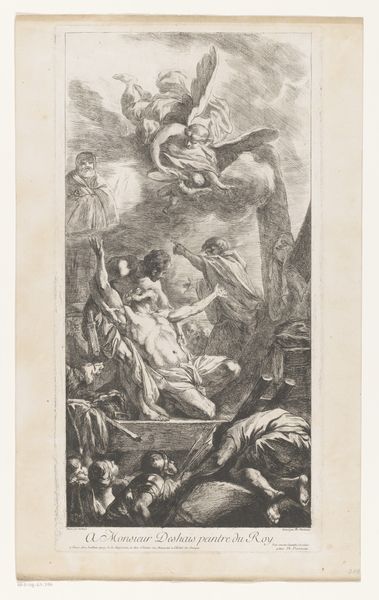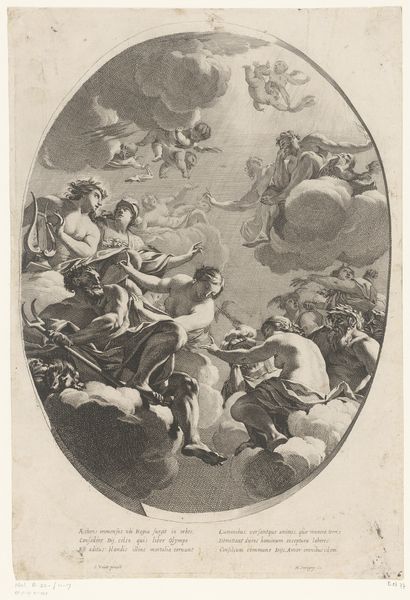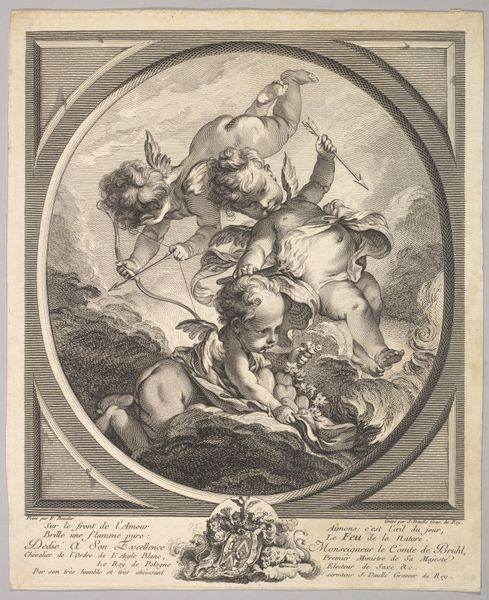
The Forges of Vulcan, from Book of Cartouches 1735 - 1775
0:00
0:00
drawing, print, engraving
#
drawing
#
baroque
# print
#
figuration
#
men
#
history-painting
#
engraving
Dimensions: Sheet (trimmed): 11 13/16 × 7 13/16 in. (30 × 19.8 cm)
Copyright: Public Domain
Johann Georg Hertel made this print, “The Forges of Vulcan,” sometime in the 18th century. As part of a “Book of Cartouches,” it’s an excellent example of how mythological imagery was being used for ornamental purposes during this period. The scene depicts Vulcan, the Roman god of fire and metalworking, at his forge, surrounded by his cyclopean assistants. Above, we see Mars, god of war, and other figures who seem to be celebrating the work being done below. This idealized view of labor connects to the broader social and economic context of 18th-century Europe, a period marked by the rise of industrial production and the celebration of human ingenuity. Note, for example, the way the artist frames labor as divinely sanctioned and the way the decorative cartouche might ennoble the objects or names placed within it. To fully appreciate this work, we might consider it in relation to texts from classical literature and other visual representations of the gods. By researching such resources, we can better understand the cultural values and institutional forces that shaped the production and reception of art during this time.
Comments
No comments
Be the first to comment and join the conversation on the ultimate creative platform.

